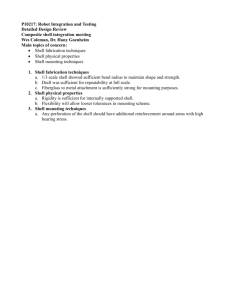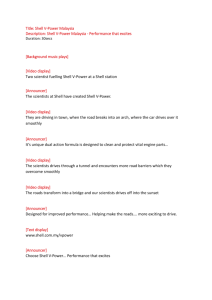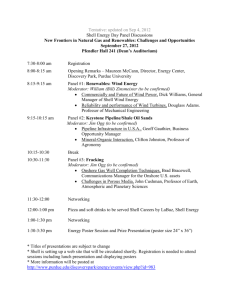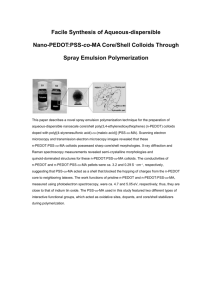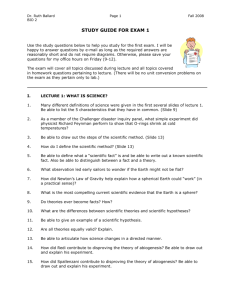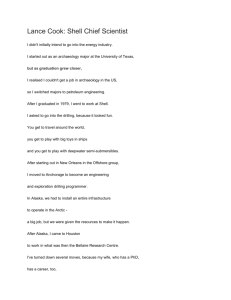TAP 705-5: Critical density
advertisement
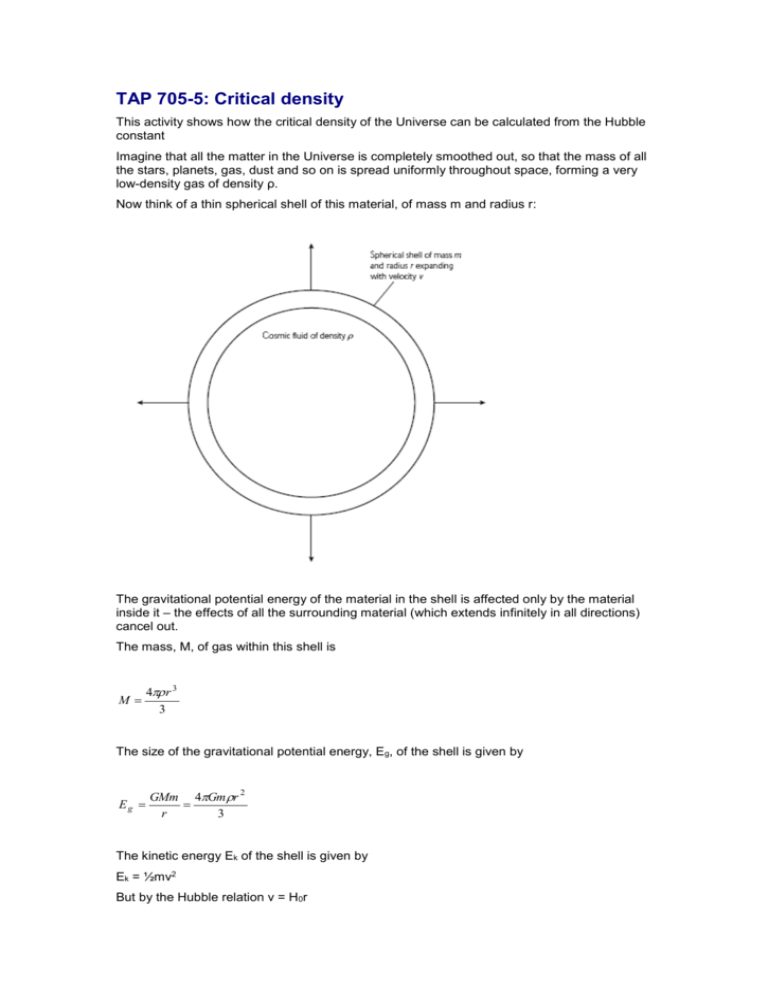
TAP 705-5: Critical density This activity shows how the critical density of the Universe can be calculated from the Hubble constant Imagine that all the matter in the Universe is completely smoothed out, so that the mass of all the stars, planets, gas, dust and so on is spread uniformly throughout space, forming a very low-density gas of density ρ. Now think of a thin spherical shell of this material, of mass m and radius r: The gravitational potential energy of the material in the shell is affected only by the material inside it – the effects of all the surrounding material (which extends infinitely in all directions) cancel out. The mass, M, of gas within this shell is M 4 r 3 3 The size of the gravitational potential energy, Eg, of the shell is given by Eg GMm 4Gmr 2 r 3 The kinetic energy Ek of the shell is given by Ek = ½mv2 But by the Hubble relation v = H0r (Think of an observer at the centre of the shell measuring the distance, r, and the speed, v, of the receding material.) So we can write Ek mH 02 r 2 2 If the shell is to have just enough energy to keep moving so that its kinetic energy just becomes zero when r becomes infinite, then 2 2 4Gmr 2 mH 0 r 3 2 This equation must define the critical density ρc Questions 2 2 4Gmr 2 mH 0 r to get an expression for ρc in terms of H0 and some other 3 2 constants. 1. Use 2. If H0 lies between 50 and 100 km s-1 Mpc-1 (1.6 to 3.2 x 10-18 s-1), what is the range of values that the critical density, ρc, could have? (Use G = 6.67 x 10-11 N m2 kg-2) 3. Approximately how many hydrogen atoms per m 3 would correspond to the larger value of ρc that you have just calculated? (Mass of hydrogen atom, m = 1.67 x 10-27 kg) Practical advice It is worth emphasising that the critical density is a theoretical concept – a ‘benchmark’ against which to measure the actual (average) density of the Universe, rather than being the real density of the Universe. At the same time, pause and wonder at the extremely low average density of matter in the Universe – it really is almost empty space, and the existence of such huge concentrations of matter in stars and galaxies is a tribute to the influence of the ‘weak’ force of gravity acting between all matter. Answers and worked solutions 1. c 2. 3H 02 8G With H0 = 50 km s-1 Mpc-1, ρc = (3 x 1.6 x 10-18)/ (8 π x 6.67 x 10-11) = 4.6 x 10-27 kg m-3 If H0 is twice as large, then ρc will be four times greater: = 4.6 x 10-26 kg m-3 3. The larger value of ρc corresponds to about 10 hydrogen atoms per cubic metre. This is less than the density of the interstellar medium External reference This activity is taken from Salters Horners Advanced Physics, section STA, additional activity 6




